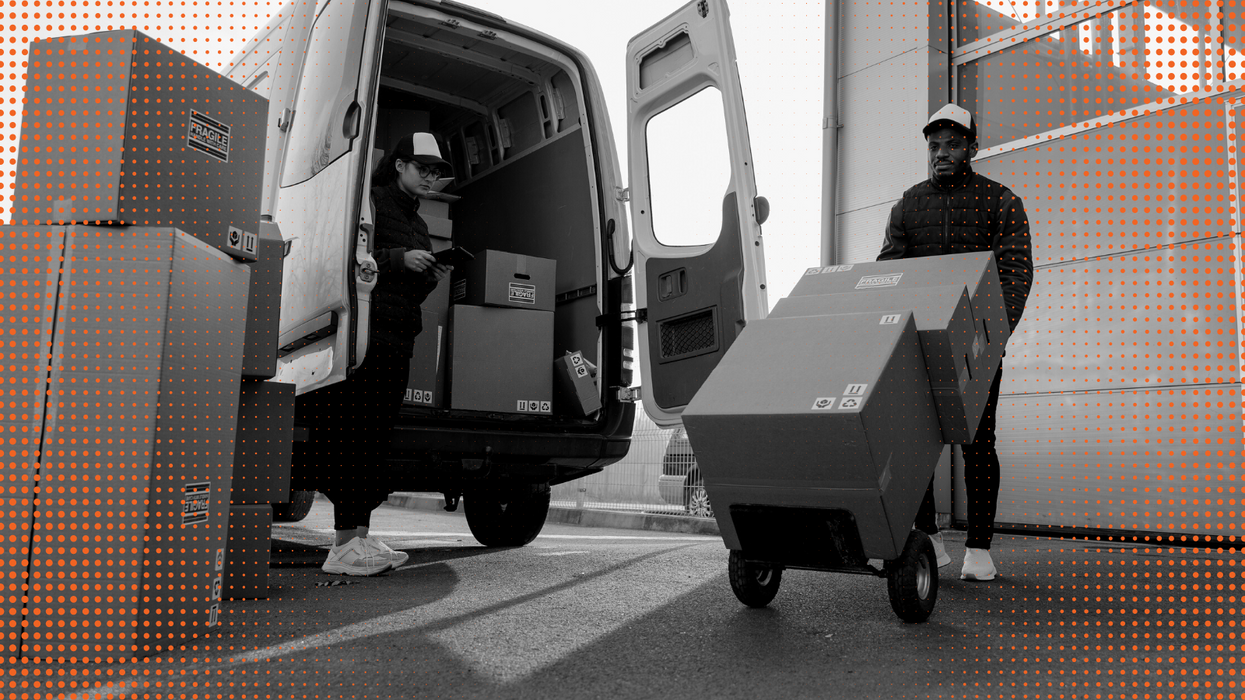Think of the future of last-mile delivery, and typically drones, electric vehicles and robots likely come to mind.
Walking onto the floor of the Home Delivery World conference in Philadelphia earlier this month, that view was confirmed by the many vehicles and automation-enabling devices on display.
But like any business, logistics and delivery is also a matter of people, and in conversations between those who were gathered at the event, it was clear that making improvements in the supply chain is just as much a matter of optimization as it is innovation.
Among leaders who took the conference stage for panel discussions on the conference’s first day, an overarching theme emerged:
Many of the pieces are in place to enable goods to reach customers within a day or even hours of an order being placed. The challenges now are in fitting those pieces together, matching it to what customers want and doing it in a way that creates a sustainable business. The future of supply chain will be won in the processes and systems that move items just as much as it will in the vehicles and software that do the moving.
With that in mind, here are takeaways on the future of supply chain and delivery that The Current drew from onstage discussions:
The right inventory in the right place
One of the promises of ecommerce is that a customer doesn’t need to be in the same location as a package to have it shipped to them. But behind the scenes, brands, retailers and their logistics partners are working to identify what items will be in demand in specific areas even before customers click “Buy,” and move inventory as close to them as possible.
“It comes down to being able to accurately distribute inventory close to demand,” said Nate Skiver, founder of parcel and ecommerce delivery consulting firm LPF Spend Management.
That elegant description belies a complex set of challenges for brands and retailers. They must decide where to invest in fulfillment centers, balancing being close to customers and close to supply chain. They must also decide which products to move and make accurate forecasts to predict where those products need to be.
Activating stores as part of the ecommerce supply chain is seen as a solution, but at many retailers, inventory for brick-and-mortar and ecommerce are still maintained separately.
At the same time, customers don’t want only punctual, fast delivery. Convenience means items arrive at a time that works for them, when they are ready to receive it.
“Customers are going to be able to lean in to precision,” Mark Irvin, chief supply chain officer at Best Buy, said. “I think the supply chain of the future has to deliver on, not just what day but also into what time is it going to deliver and where does it go that’s best for me and my family?”
Irvin laid out an example in which a person gets an alert about an item that is about to arrive in an hour or two, so a customer could commute home to meet it. A customer may also want it delivered to a locker instead of a home.
Being able to provide those options and meet expectations will be the key.
Transparency trumps time
As the capability for faster delivery moved into place, it was a commonly-held view that customers wanted things as quickly as possible. But coming off a pandemic-era shock to supply chains that made availability of items more difficult, brands and retailers have since learned that customers value transparency about when an item will arrive even more than a faster delivery time.
“Moreso than as quickly as possible, [customers] want to be told at the onset, when is it going to arrive, and have that be accurate,” Stacey Wagner, chief experience officer at Zappos.com, said. “That’s almost more important than the speed with which it gets to people’s homes.”
There could be a higher cost for retailers in not delivering on what they say they are going to do. Wagner said the footwear and apparel ecommerce platform hears more about the times when the system didn’t update to show a later delivery time than it does about speed as a whole.
At the same time, customers are resetting expectations as more items are being delivered. They may not need a shirt within hours and would in fact be willing to wait for it. But when groceries are needed to cook dinner, the needs change. As personalization becomes more possible, it will be more important than ever for retailers to gain an understanding from customers of what their expectations are, and how best to meet them.
Embrace sustainability, and show the work
A push for sustainability has led retailers to make commitments to change systems. Take Petco. By 2025, 50% of products will be sustainably sourced at the pet retailer, said Chris Fall, Petco's director of supply chain ecommerce and omni-fulfillment.
Consumers choose brands and retailers for the items they have, and the shopping experience that's provided to obtain them. They also voice expectations for how companies are doing business.
“The customers in our base want sustainability, they want us to talk about it, they want us to prove it if we say we’re going to do something,” Fall said.
To be sure, sustainability can mean many things. Andres Marcos, senior director of operations at the woman-forward razor and body brand Billie, said It’s a necessary step for brands and retailers, to understand what it means in their own context, and identify initiatives that they can follow through on.
Billie chose to focus on packaging – in particular, on reducing single use plastic. It was an area where the brand had control and could act, and had the added benefit allowing the brand to increase recycled content.
“That’s one example of something where we felt, this is concrete, we can act on it,” Marcos said. It proved to be cost-effective. In the end, the brand could demonstrate how it was following through on a commitment.
Irvin, of Best Buy, said there can also be opportunities to share resources that can help reduce footprints.
“We’ve certainly collaborated in the space of delivery,” Irvin said. “We haven’t always collaborated in the space of warehousing. Who do you work with as a partner that is not a direct competitor that you can now house together, to go together in a whole new way so that you can bring down the footprint to increase sustainability efforts.”
Returns require logistics, too.
When a customer returns an item, the process of reverse logistics kicks in. With more online sales that offer generous return policies, this is becoming a more frequently used part of the system. According to the National Retail Federation, the nationwide retail return rate increased to 16.6% in 2021, which was up from 10.6% in 2020.
As they seek to balance customer satisfaction and keep items in circulation, retailers are working to curb the volume of returns. A first step is identifying why customers are bringing an item back. At Best Buy, 25% of returns are due to remorse. So the electronics and appliances retailer has redoubled efforts to empower sales associates with information and tools that can help customers find what they’re looking for to meet their needs at the store, and get it right the first time.
“We’re trying to make sure we’ve got people that are up front helping customers with those decisions so that it limits that 25% that they're injecting into this return process," Irvin said.
After a purchase, repair services can also help to ensure an item remains in the home. Outlets and secondhand markets may also be an avenue to ensure items that are returned don't end up in a landfill. Activate an ecosystem, and extend the life of goods.
Eye on costs and profitability
At a time when rising fuel and transportation costs are driving 40-year-high inflation, the dollars required to move and deliver an item are in focus. Factor in that delivery tends to get more expensive as times get faster, and the need to maintain a balance becomes clear. The capabilities to deliver items quickly are there, but just as important for a business is how it will affect margins.
This in turn will drive decisions in each of the areas discussed above. The choices of whether to invest in fulfillment centers and to consider sustainable options will have to make business sense, in whatever way a company chooses to define that. This is where technology can help with automating process and saving time, but the changes made to processes can have just as much impact.
Knowing what customers want, providing solutions that truly fit those needs, keep the promises these initiatives make and tune supply chains to deliver.












